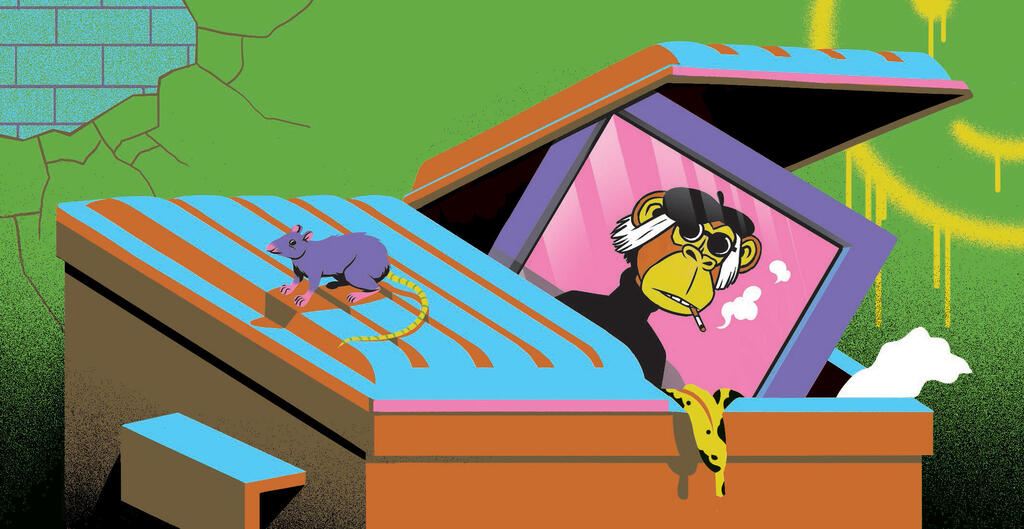
Analysis
NFT market crash unveils tech's limitations in addressing exploitative labor practices
The resounding crash of the NFT market, which aimed to revolutionize the art world in the digital age, may offer lessons about managing inflated expectations in the realm of AI. To prevent a similar scenario, it is crucial to ascertain whether a technological solution genuinely addresses a human need
The NFT market continues its ongoing plunge, reminding us that we cannot trust technology to save us from the exploitative labor market. According to a report by Alchemy, NFT trading volume in July fell by 29%, compared to June, to $632 million, and token sales fell by 23% to $3.7 million. Overall, this market recorded a steep fall of 95% in trading volume from the record in January 2022, which reached $17 billion.
Where will the trading exchanges get their income from? From those that this technology claims to save, of course - the artists. According to research firm Nansen, NFT exchanges have cut the royalty rates paid to artists when ownership is changed, hoping that the cost reduction will jump-start faltering trading levels. Since that trading record in January 2022, royalty rates have been cut dramatically to 0.6% for today's transaction compared to 5% a year and a half ago. Why does it matter, and what can the upheavals being experienced by the NFT market teach us about the relationship between technology, work and value?
NFT is a device whose purpose is to answer the question of what ownership looks like in digital spaces. Technically, it is a certificate of authenticity on the blockchain system, which allows those who produce it to mark a certain digital asset as unique. The token comes in the form of a cryptocurrency, and every time that coin is sold its creator is supposed to receive royalties on the sale. This is in contrast to if a painter, for example, sells an oil painting they painted, then they will only receive their share in the initial sale. If the painting changes hands and is sold to different buyers, that painter will get nothing.
In the great hype of this technology, there were those who promised that it would change everything we can imagine regarding property rights and copyrights, and empower those people who until now were "victims" of the digital revolution and saw how their ability to make a profit in this world is being eroded. Anil Dash, the original creator of the idea, explained that the goal was to "protect artists" in the digital age, to give them the possibility to mark the ownership of an original work and thereby monetize this ownership.
"NFT is shaking up the art world," wrote Time and the New York Times; "NFT gives artists an opportunity to change their process of extinction," wrote Business Insider; "How artists can incorporate NFT and music to grow their brands," wrote Rolling Stone; And "this is how NFT can redefine the world of music," noted Forbes.
The relationship between the NFT market and the media was mutual. The large amount of speculative money that flowed into the field drove media interest, and the media interest contributed to the flow of additional capital into the field. In the middle were always artists, musicians, graphic designers, illustrators, screenwriters and others who had to adapt. This is the future, they were told in the NFT market; If they don't join, said the media, they will go extinct.
In short, only a very few have found wealth for themselves in the NFT market. These are not artists of any kind - but traders, trading exchanges, crypto companies and casual entrepreneurs who launched an NFT series just because of the public interest and the thought of claiming a piece of the prize. The reason that profits went mainly to the traders is simple - when the industry and the complementary products were developed, the artists were never asked about their needs, what their difficulties were or how they would define the basic framework. Perhaps if they had asked, they would have tried to develop a simpler and more accessible technology (which does not require tinkering with blockchain technology) or to develop less polluting tools, which include fewer intermediaries, which do not require activity in an unsupervised and fraudulent market, or which empowers the artist to set the royalty rate for themselves.
In recent months, a new type of machine learning technology has been deployed - an algorithm that is fed huge amounts of data, visual or textual, based on which it learns the probability of the order in which words and pixels appear in a convincing way. Models of this technology such as ChatGTP and Dall-E-2 succeed in the guesswork of synthesizing a "new" work. Now we are captives in a new hype cycle that includes one basic question: how can these models be used to influence the labor market, in finance, education, medicine, law and even the work of the government. These questions became the default so that immediately after the launch of the tools in question, analysts and research companies began to place large and tectonic numbers on the labor market.
The consulting firm McKinsey, for example, determined in a report published last week that 12 million jobs will be eliminated or changed by 2030 due to these tools, and in total 30% of all working hours in the American economy will be automated. A Pew study from June determined that one in five jobs is at risk due to these tools, Goldman Sachs determined in March that the tools will lead to the replacement of 300 million jobs, and the research company Forrester announced last month that the tools will eliminate 32,000 jobs in the American advertising market by 2030, or 7.5% of it.
Without going into the validity of these numbers, and without mentioning that every decade or so we fear that everything we know will change in the next 10 years because of technology, it is important to remember that while research companies are busy explaining how artificial intelligence will eliminate jobs, and artificial intelligence companies that prioritize profit maximization are concerned with how to replace employees, we do not ask what would we want from the technology itself. When aggressive market forces repeatedly tell us that new technology will bring change, and ask us to imagine together how it will change, they push the human to the side and put the technology at the center as an inevitable event to which we only react.
One quote attributed to artist Laurie Anderson while working on an AI-related project says: "If you think technology will solve your problems, you don't understand technology—and you don't understand your problems." This means that technology does not exist in a vacuum. In this case the technology, whether algorithm or cryptography, is just mathematics. Mathematics can be perfect, but reality is not. Artificial intelligence can be "logical" or rational, but humans only sometimes are. Modern social systems have too many parts to simplify them into an equation or reduce them to the rule of an algorithm.














